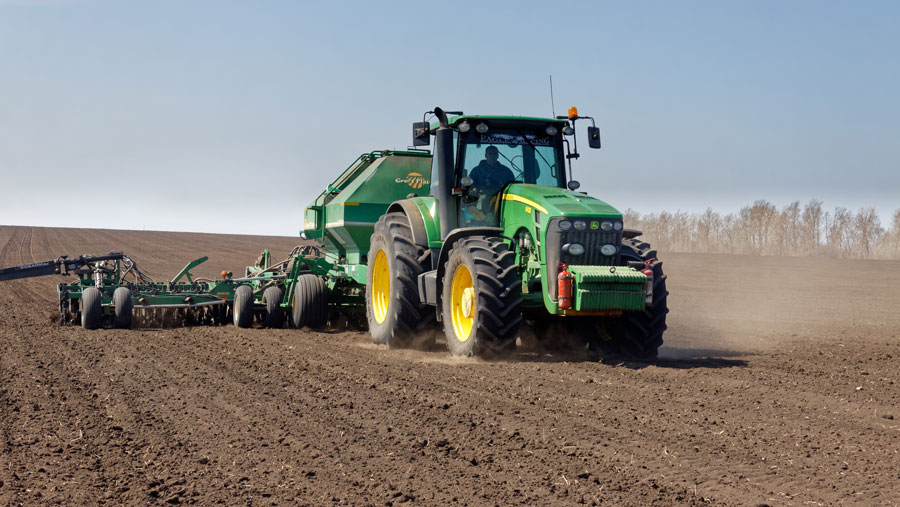Ukraine’s spring planting campaign gathers momentum
 © Adobe Stock
© Adobe Stock Ukrainian farmers are making steady progress with their spring planting campaign, despite many being restricted to working during daylight hours due to the Russian invasion, say analysts.
Spring barley is being planted, and while there is still time to plant more, it will finish 34% down on pre-war forecasts, according to the latest assessment by Black Sea independent agronomist Mike Lee.
The main spring crops of maize, sunflowers and soyabeans, are being drilled now, and the initial planting pace is similar to previous years, but it is too early to tell how much will be planted overall.
See also: Ukrainian farmers wear bulletproof vests to sow spring crops
Last week, Ukraine’s ministry of agriculture said farmers had sown 2.5m ha of spring crops so far this year, 20% of the expected area.
And it predicted the spring sowing area could drop 20% due to the Russian invasion.
But Mr Lee, director of Green Square Agro Consulting, puts the cropping area down at least 30%, and he believes yields are also likely to be down due to fewer inputs and timeliness issues.
However, around 35% is in regions currently occupied by Russian forces, and elsewhere mines and ordnance will put more hectares beyond the reach of a combine, Mr Lee notes.
“The big unknown is how it’s going to end up. It’s a case of waiting to see where the final planting hectares figures arrive at,” he said. “That will give us an idea where harvest may go to.”
Bulletproof vests
Farmers have seeds and fertiliser, and diesel is available, but cash only and at $2 (£1.61) per litre. Some farmers have installed armour on their tractors and wear flak jackets and helmets when in the field.
Fieldwork is restricted to daylight hours, piling on the pressure for farmers who would normally work through the night.
But tractors sat in a field with the lights on would make them vulnerable to attack, Mr Lee explained.
Ukraine’s ministry of agriculture reports that nitrogen fertiliser has been applied to winter crops, but doesn’t say how much and on how many hectares.
The wheat crop at present looks in good condition.
Nearly 30 countries rely on Ukraine imports for more than 30% of their wheat, and for some, it is even higher.
“Each month, Ukraine would export around 4-5m tonnes of grain through its Black Sea ports, with 90% going through Odesa and Mykolaiv,” said Mr Lee.
“Both ports are in territory controlled by Ukraine and, apart from some minor damage, remain intact, although the situation is precarious.”
Romanian grain exports
Ukraine is exporting grain overland through its western borders, but several logistical bottlenecks mean the pace is slow and the additional cost is high, he added.
On Friday 29 April, Romanian port operator Comvex reported the first large shipment of Ukrainian grain since the start of the Russian invasion.
The company’s president, Viorel Panayt, reported that a vessel with 71,000t of Ukrainian maize had left the Romanian port of Constanta.
He added that a further 80,000t of Ukrainian grain had already been transported to Constanta, and another 80,000t were on the way to the port.
